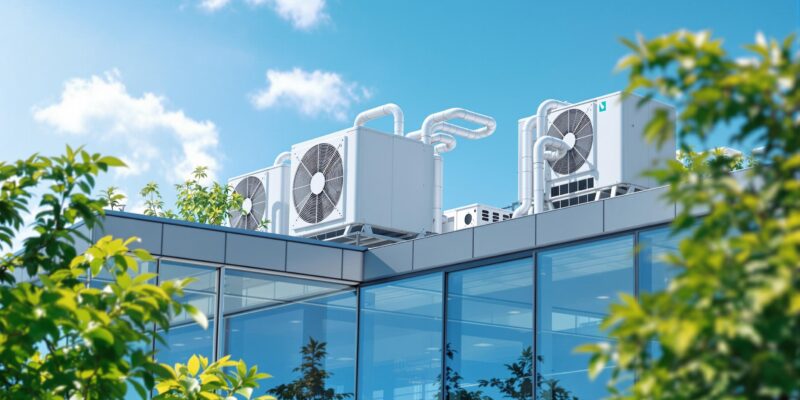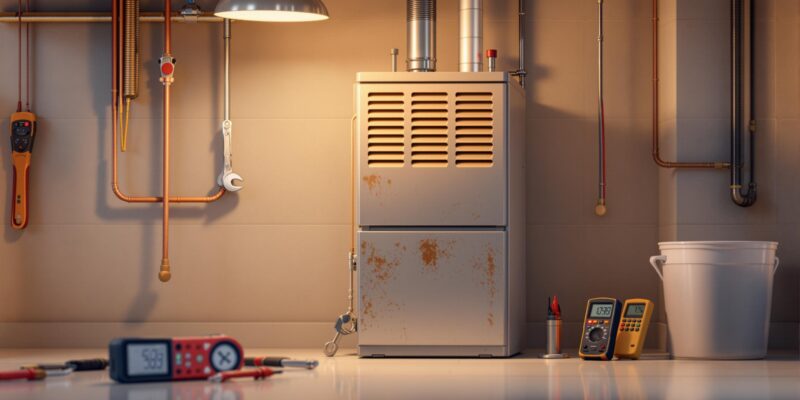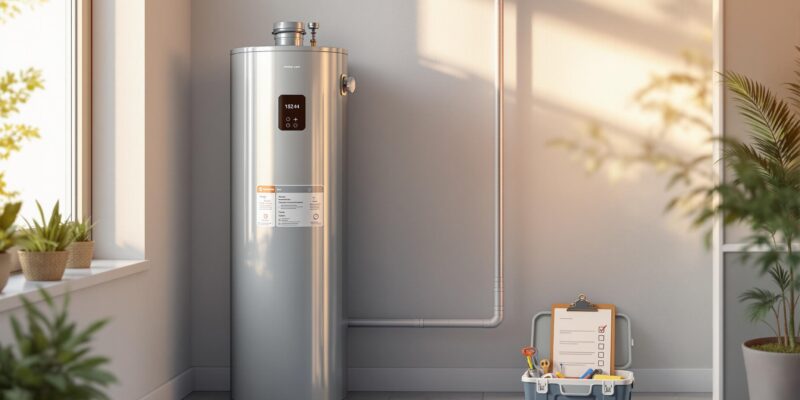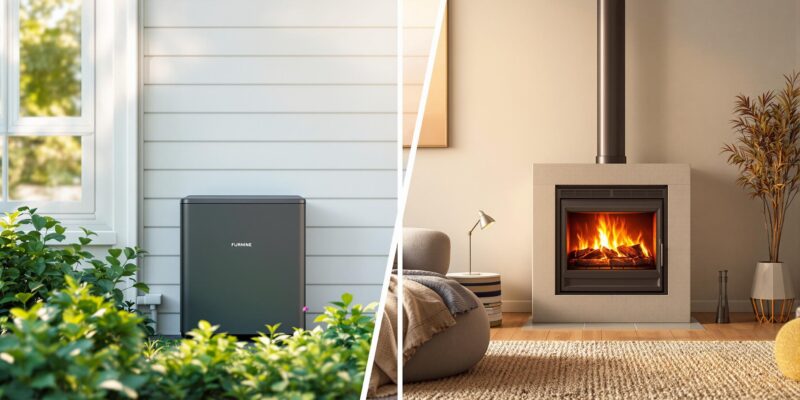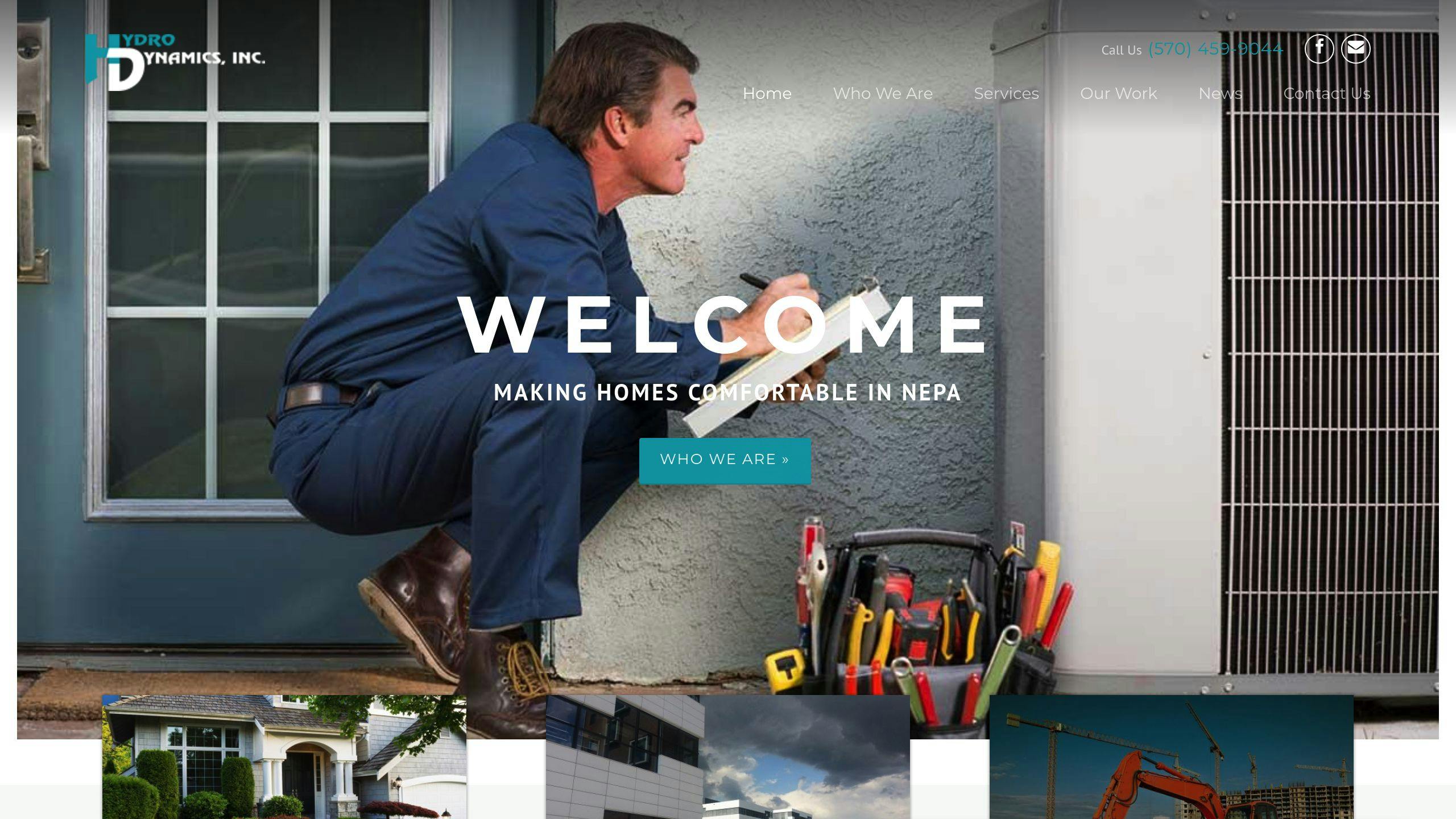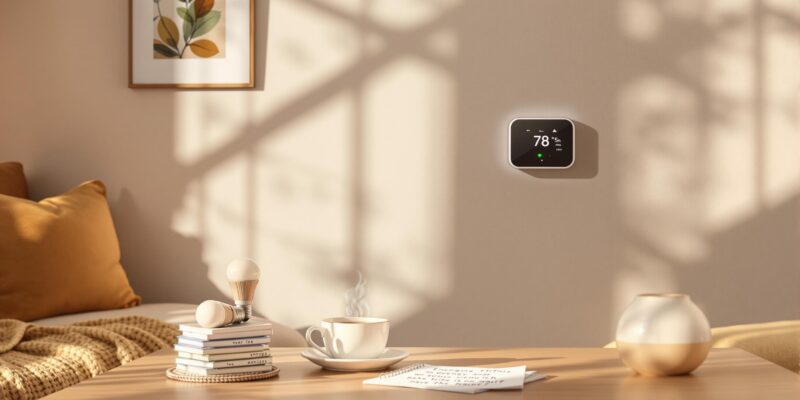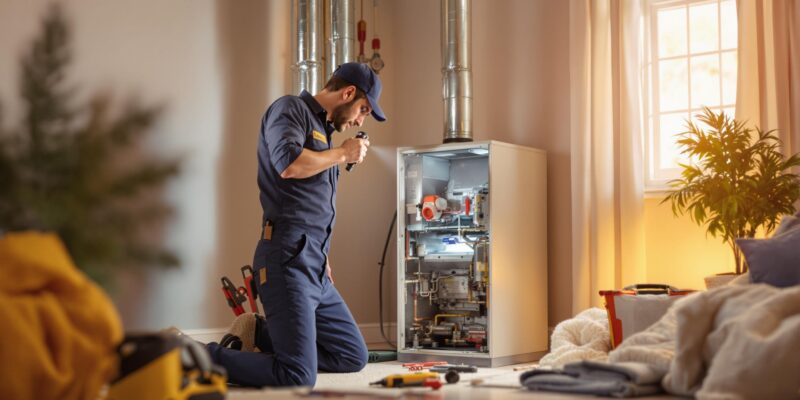Heating vs. Cooling Maintenance: Key Differences
Want to keep your HVAC systems running efficiently and avoid costly breakdowns? Here’s what you need to know:
- Heating systems use 4x more energy than cooling systems, so they require regular checks for burners, heat exchangers, and gas lines.
- Cooling systems focus on removing heat and need attention to refrigerant levels, coil cleanliness, and condensate drains.
- Shared tasks include changing filters, thermostat calibration, and system inspections.
Quick Comparison
| Aspect | Heating Maintenance | Cooling Maintenance |
|---|---|---|
| Energy Usage | Higher energy consumption | More efficient but heavy in summer |
| Key Components | Heat exchangers, burners, gas lines | Evaporator coils, refrigerant lines |
| Seasonal Timing | Early fall | Early spring |
| Safety Concerns | Gas leaks, carbon monoxide | Refrigerant levels, electrical risks |
Pro Tip: Schedule professional heating maintenance in fall and cooling check-ups in spring to ensure optimal performance year-round.
Yearly HVAC Maintenance Checks
Heating System Maintenance: Requirements
Maintaining your heating system is crucial for keeping it running efficiently during the colder months. Let’s break down the key components, tasks, and schedules involved.
Components in Heating Systems
Heating systems are made up of several essential parts, including furnaces, boilers, heat pumps, heat exchangers, burners, fuel lines, and air filters. Each of these requires specific attention to ensure everything works smoothly.
Maintenance Tasks for Heating
A major focus is on inspecting and replacing filters. Dirty filters can lead to up to a 15% increase in energy use [3]. Here’s a quick guide for filter replacement:
- 1-inch filters: Replace every 2-3 months.
- Media filters: Replace every 6-12 months [5].
Other important tasks include:
- Checking the heat exchanger for cracks or other damage.
- Cleaning burners to ensure proper combustion.
- Inspecting fuel lines for leaks.
- Lubricating moving parts to minimize wear and tear.
Heating Maintenance Schedule
Sticking to a regular maintenance schedule helps prevent issues and keeps your system running efficiently. Here’s a helpful timeline:
| Frequency | Tasks | Purpose |
|---|---|---|
| Monthly | Check filters, perform visual inspections | Avoid airflow restrictions |
| Semi-annually | Clean burners, inspect fuel lines | Ensure safe and efficient operation |
| Annually | Conduct full system inspection, service heat exchanger | Catch and prevent major problems |
By following this schedule, you’ll reduce the risk of breakdowns and improve your system’s performance.
Heating systems require specific care, but cooling systems come with their own set of maintenance needs, which we’ll cover next.
Cooling System Maintenance: Considerations
Cooling systems work differently from heating systems. Instead of producing warmth, they remove heat, which means they require specific upkeep and care.
Key Components of Cooling Systems
Cooling systems are made up of several parts that work together to keep your space comfortable:
- Evaporator coils: Absorb heat from indoor air.
- Condenser units: Release heat outside.
- Refrigerant lines: Move coolant through the system.
- Electrical connections: Power the system and keep everything running.
Essential Cooling Maintenance Tasks
According to the U.S. Department of Energy, keeping up with maintenance can cut energy costs by up to 30% [2]. Here’s what you need to do:
| Task | Frequency & Purpose |
|---|---|
| Clean or replace air filters | Every 1-3 months to maintain airflow and efficiency |
| Clean evaporator and condenser coils | Annually to ensure the system cools effectively |
| Check refrigerant levels | Annually to maintain optimal performance |
| Inspect electrical connections | Twice a year to avoid breakdowns |
| Clear the condensate drain | Every three months to prevent water damage |
Tips for Effective Cooling Maintenance
Timing and attention to detail are key when it comes to maintaining cooling systems. Here’s how you can stay ahead:
- Schedule professional inspections in early spring, before summer demand kicks in.
- Keep outdoor units free from debris, leaves, and overgrown plants.
- Address strange noises or reduced cooling performance as soon as they arise.
Professional services are especially important for tasks like refrigerant handling and electrical inspections. These ensure your system runs efficiently, avoids costly breakdowns, and lasts longer. With regular care, your cooling system will deliver consistent comfort throughout the hottest months.
Next, we’ll look at how some maintenance practices overlap with heating systems.
Comparing Heating and Cooling Maintenance
Understanding the specific needs of heating and cooling systems ensures they run safely and perform at their best.
Shared Maintenance Practices
Both systems benefit from regular upkeep like filter changes, system inspections, and thermostat calibration. Clean filters prevent energy waste and help systems operate as they should.
Differences in Maintenance Needs
Heating and cooling systems have distinct components, which means their maintenance needs differ.
- Heating systems: Require checks for gas lines, burners, and heat exchangers to ensure safety and efficiency.
- Cooling systems: Need attention to refrigerant levels, coil cleanliness, and condensate drains to maintain proper function.
Timing matters too. Heating systems are best serviced in early fall, while cooling systems should be checked in early spring.
Heating and Cooling Maintenance Comparison Table
| Aspect | Heating Maintenance | Cooling Maintenance |
|---|---|---|
| Energy Usage | Uses 4x more energy than cooling | More efficient but heavier use in hot climates |
| Critical Components | Heat exchangers, burners, gas lines | Evaporator coils, condensers, refrigerant lines |
| Safety Concerns | Gas leak detection, carbon monoxide testing | Refrigerant level monitoring |
| Seasonal Timing | Early fall before cold weather | Early spring before summer heat |
| System-Specific Tasks | Combustion analysis, heat exchanger inspection | Coil cleaning, refrigerant pressure check |
For example, variable-speed air conditioners can save up to 30% on energy costs [4]. Meanwhile, high-efficiency furnaces require extra care, like ensuring condensate lines don’t freeze during cold weather [3]. Knowing these differences helps you provide the right care for each system.
Up next: weighing the pros and cons of professional versus DIY maintenance.
Professional vs. DIY Maintenance: Choosing
Taking the right approach to HVAC maintenance can help you save money and avoid system breakdowns. Knowing which tasks you can handle on your own and when to call in a professional is key to keeping your system running smoothly.
DIY Maintenance Tasks
Homeowners can safely tackle a few basic maintenance tasks:
- Basic Upkeep: Clear debris from outdoor units and check for visible issues like strange noises, blocked vents, or changes in system performance.
- Filter Replacement: Changing filters regularly boosts efficiency and improves air quality, keeping your system in good shape [5].
- Visual Checks: Look out for signs of wear or unusual operation that may need professional attention.
When to Hire Professional HVAC Services
Some tasks are best left to certified professionals. These include more complex maintenance that requires specialized skills and tools:
| Task Type | Why Professional Help is Needed |
|---|---|
| Refrigerant Handling | Requires EPA certification and proper equipment |
| Electrical Components | Risk of electrical shock and potential damage |
| Gas Line Issues | Involves safety risks and legal regulations |
| Complex Diagnostics | Needs advanced testing tools and expertise |
| Annual Tune-ups | Provides a thorough system evaluation |
Benefits of Professional Maintenance
Hiring a professional comes with several advantages:
- Safety and System Life: Trained technicians handle intricate components safely and catch issues early to extend your system’s lifespan [5].
- Lower Costs Over Time: Routine professional care prevents costly emergency repairs and improves energy efficiency, cutting down your bills [1].
“A professional eye can also detect problems you might not notice and make the necessary repairs before they become major concerns.” [6]
- Warranty Protection: Many warranties require professional maintenance. DIY fixes could void your warranty and lead to denied claims [5].
For the best results, combine simple DIY tasks with professional check-ups twice a year – once in the spring for cooling systems and again in the fall for heating systems [1].
Conclusion: Key Points on Heating and Cooling Maintenance
Keeping heating and cooling systems in good shape means understanding their unique requirements while sticking to some shared upkeep practices. Regular care plays a big role in how well these systems perform and how efficiently they use energy.
As mentioned earlier, while there are overlapping maintenance tasks, each system has parts that need special care. Heating systems focus on components like heat exchangers and burners, while cooling systems require attention to evaporator coils and condensers. Both systems also benefit from regular filter replacements and routine inspections to keep them running smoothly.
To get the best performance, combine simple do-it-yourself tasks with scheduled professional services. For heating systems, plan professional maintenance in the fall. For cooling systems, spring is the best time for check-ups. This seasonal approach ensures both systems are ready when you need them most.
Professional HVAC services are crucial for keeping systems efficient and extending their lifespan. Companies like Hydrodynamics provide expert care, offering detailed inspections and addressing potential problems before they escalate [5].





